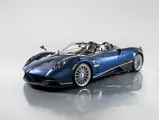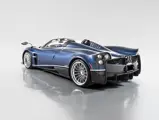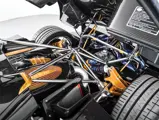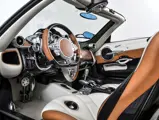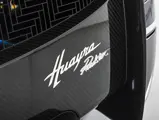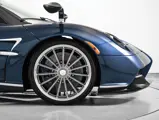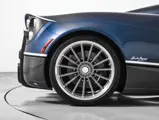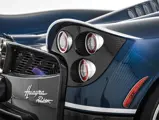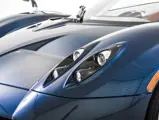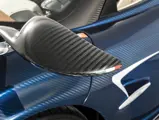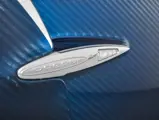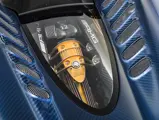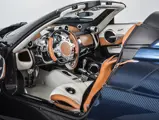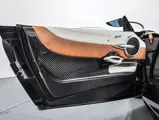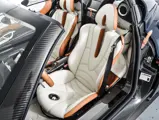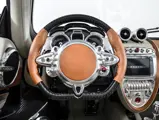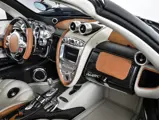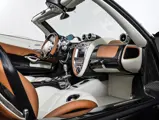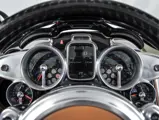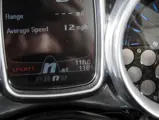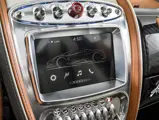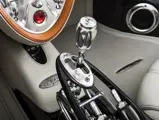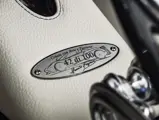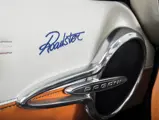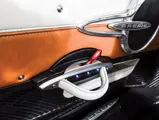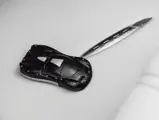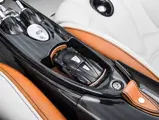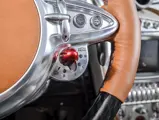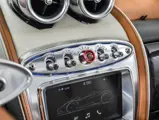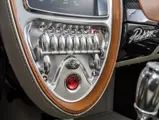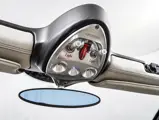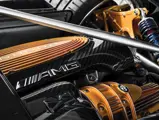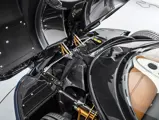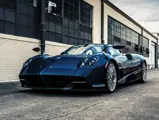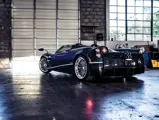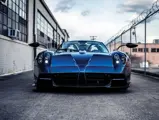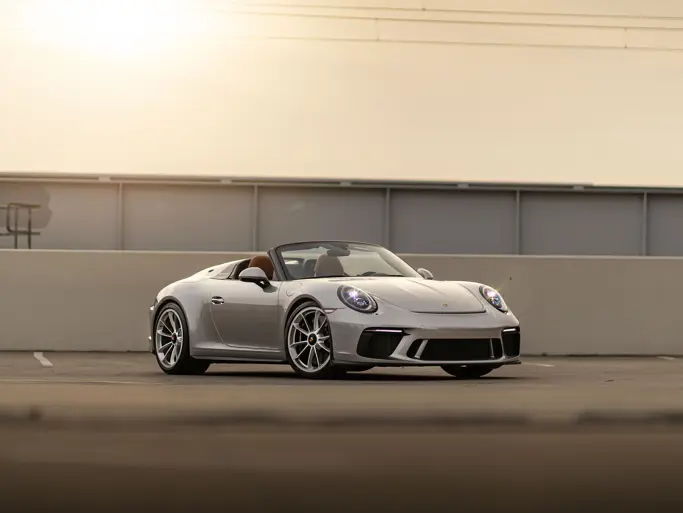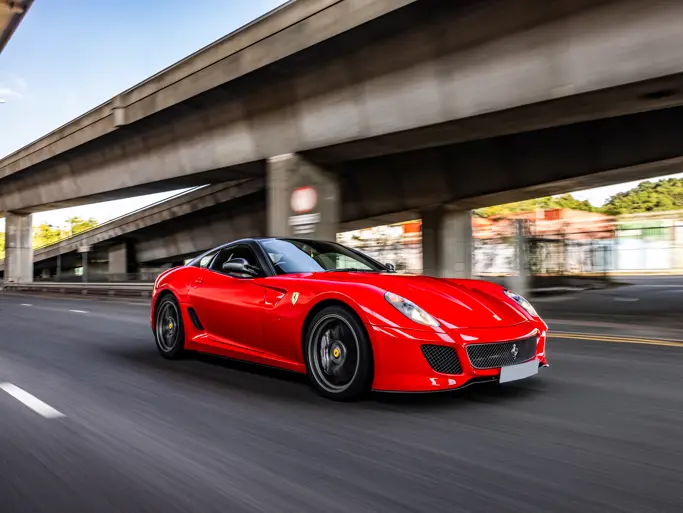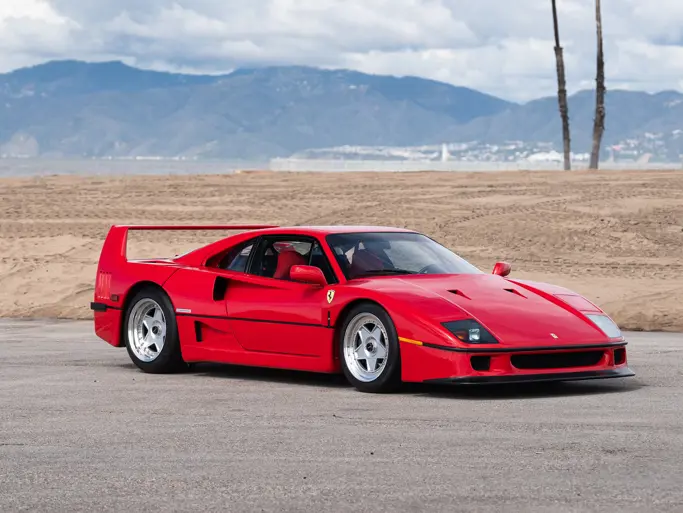Arizona 2020
2018 Pagani Huayra Roadster
{{lr.item.text}}
$2,370,000 USD | Sold
 | Phoenix, Arizona
| Phoenix, Arizona
{{internetCurrentBid}}
{{internetTimeLeft}}

- The 42nd of only 100 roadsters
- Shows little more than delivery mileage
- Stunning Blue TriColore with exposed carbon weave trim throughout
- Among the most intricate, well-wrought supercars ever built
When it comes to supercar builders, a humble start is one of the foundations on which success is built. Horacio Pagani, growing up on the tree-lined streets of Casilda, Argentina, just an hour’s drive from stately Rosario, probably didn’t feel much like how Enzo Ferrari and Ferruccio Lamborghini got their starts. Horacio’s father, Luca, was a baker, a man who worked with his hands every day to create edible masterpieces. Ferrari and Lamborghini similarly grew up in quiet communities not far from the bustle of proud, industrial cities, and they watched their fathers ply their trades by hand, and not by pen.
Pagani’s dedication and enthusiasm eventually led to his hiring at Renault’s racing team, and eventually he coaxed his way into a job at Lamborghini. In Sant’Agata, his talents were soon recognized, and he was handed the engineering reins in the mid-1980s. However, cash-strapped Lamborghini’s reluctance to invest in technology to build carbon-fiber parts prompted Pagani, just short of his 40th birthday, to start his own consulting firm in Modena with a focus on advanced composite materials.
It was this base which quickly endeared the largely self-made Argentine-Italian to Italy’s top supercar builders. His former employer, Lamborghini, commissioned Pagani’s help in streamlining its cars, cementing the still-young engineer’s place in the heart of supercar country. Pagani would not be content to watch others build high-performance cars, however. He created a prototype that would take not just track-proven engineering but also racing design to the street, and the car he initially called Fangio attracted enough attention that Mercedes-Benz agreed to supply its vaunted V-12 powerplant.
The Zonda, as the car would eventually become known, made its debut at the 1999 Geneva salon with the silky, torquey V-12 previously reserved for Mercedes’ sedate but ferocious 600-series sedans, coupes, and convertibles. In the Zonda C12, the engine screamed as it hustled power to the wheels. The car could cover very little tarmac from a stop to 60 mph in just four seconds. Mercedes-Benz’s AMG division took the largely unprecedented move of offering up more power in the Zonda S that followed, again with 12-cylinder power and a 208 mph top speed.
Pagani unveiled the long-awaited successor to the Zonda in 2011, and critical acclaim was piled on almost immediately for the new Huayra, named after a Quechua wind god. An AMG-sourced V-12 engine built specifically for Pagani in Germany by Michael Kübler featured twin turbocharging for more than 700 horsepower. Active aerodynamics changed how high the car sat off the ground through a complex system of flaps controlled by the ABS and ECU systems. The drag coefficient could be varied from .31 to .37 depending on the high-speed situation in which the car found itself. Not only was the active aero system effective at keeping the car planted as it zoomed to nearly 240 mph, it provided a substantial stability improvement in cornering. A seven-speed sequential gearbox with an unusual single-disc clutch configuration was chosen for its rapid gear changes and its remarkably low weight. Massive Brembo-sourced four-piston front and rear brakes grab the 15-inch drilled carbon ceramic brakes to bring the car to a halt reliably, consistently, and above all, exceptionally rapidly.
Pagani recognized that the hypercar market was focused heavily in favor of open-top models, and the automaker took the lessons it learned from the Huayra when the roadster was unveiled at the 2017 Geneva show. The roadster boasts its own styling, conventional doors in place of the gull-wings found on the coupe, and a lightened and stiffened body. A rethought carbon-titanium weave tub helped save about 176 pounds over the coupe. Nobody knows carbon fiber like Horacio Pagani, but let’s not forget about his unparalleled understanding of aerodynamics. A quartet of pop-up flaps press the body toward the tarmac even as the atmosphere does its best to spoil things. More power extracted from the AMG V-12 pushed total output above 750 horsepower, and a new seven-speed automated manual gearbox developed by British race engineering firm Xtrac ensured astounding acceleration.
So proud is Horacio Pagani of his company’s most high-performance model yet that he effusively branded it “better than anything we’ve done so far” in a 2019 interview with Britain’s Top Gear magazine. In many ways, the Huayra may be the ultimate expression of the internal-combustion engine, as the company has announced plans to move toward electrification for its future products.
The Huayra roadster on offer here is finished in a stunning Blue TriColore with silver detailing and exposed glossy carbon-fiber trim that becomes more vibrant in brighter light. The gravitas afforded by its rich finish serves as an instant reminder that Pagani is not a mere builder of high-performance cars. The company sets an exceptionally high standard for its obsessive attention to detail, and it isn’t content simply painting over the materials that have become so closely linked to Horacio Pagani. The weave of the car’s carbon fiber, both that on exposed exterior panels and applied to more decorative interior trim, has been carefully lined up for the purest symmetry. Its details must be seen up close to be appreciated.
Inside, this example features a soothing combination of cream and brown leather upholstery, with no shortage of composite to remind occupants that they are in a performance car, not a luxury cruiser. Round vents for the climate control take on a nautical or aeronautic theme, which is echoed in the matte trim rings around the audio system’s speakers. The diminutive center console features a delicate gear lever for the dual-clutch transmission, with its linkage partially exposed and visible as soon as the doors are opened.
The steering wheel, in many ways the most important touch piece in the entire vehicle, features leather-wrapped sides and grippy carbon-fiber upper and center sections. Its myriad controls flank a wide leather-covered center pad. They may not be easy to sort at first glance, but that is not the point of a Pagani Huayra. This is not a car intended to be approachable by average drivers. It is, however, a remarkably practical machine. Behind the front seat sits a set of custom luggage upholstered, in typical Italian fashion, in fine leather to match the seats and interior. A touchscreen infotainment system serves as a modern link and is echoed in a small vertical LCD in the instrument cluster. Like the rest of the Huayra, the car’s instrumentation manages to blend old-world craftsmanship and design with modern touches. Orange needles hide beneath silver houses when the car is turned off or at a stop.
The massive engine cover behind the passenger compartment rotates rearward to expose the twin-turbocharged 6.0-liter V-12. Its appearance alone could be an enthusiast’s primary attraction. With the Huayra-shaped key slipped into its holster and the ignition engaged, the V-12 settles into a smooth idle befitting a luxury car. Slink around town in a Pagani, and from the cabin, its comfortable ride seems almost tame. The Inconel titanium exhaust breathes naturally, with a gentle staccato that opens up into a full-fledged wail with the accelerator pedal forced to the floor. Few will ever see a Pagani, let alone drive one, but those who do enter what may be the most exclusive club in cardom.
A Pagani will be, of course, the center of attention wherever it goes. This example shows less than 200 miles and has been sparingly used. Only 100 Huayra roadsters will be commissioned. This example is number 42, as indicated by the inscribed plaque that bears the Italian phrase Creata con Arte e Passione that so poignantly sums up Pagani.

